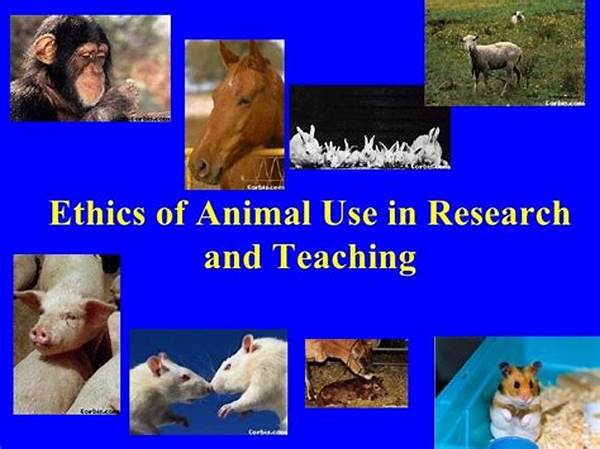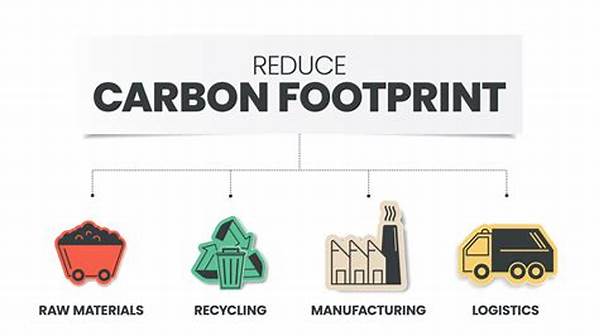Hey there, fellow reader! Today, we’re diving into the fascinating world of ethical animal research methods. It’s a topic that often stirs up quite the debate, but it’s essential to explore if we’re to keep science moving forward responsibly. So, let’s make ourselves comfortable, grab a cup of coffee, and chat about what’s going on in the realm of animal research.
Read Now : Enhancing Focus In Portrait Photography
The Importance of Ethical Animal Research Methods
Alright, let’s talk about why ethical animal research methods matter. You see, research involving animals has been a significant part of scientific advancement. From developing life-saving medicines to understanding complex biological processes, animal research has played a role. However, it’s crucial to ensure animals are treated with care and respect. That’s where ethical methods come in.
Using these methods means adhering to guidelines that prioritize animal welfare while still allowing the advancement of science. It involves minimizing pain and distress and implementing the “Three Rs”: Replacement, Reduction, and Refinement. Replacement refers to using non-animal alternatives whenever possible. Reduction involves using the fewest number of animals necessary, and Refinement means refining procedures to minimize pain and distress. With ethical animal research methods, we align scientific progress with compassion.
Common Ethical Animal Research Methods
1. Replacement Strategies: Using cell cultures or computer models to simulate animal systems.
2. Reduction Techniques: Implementing statistical methods to reduce the number of animals needed in research.
3. Refinement Approaches: Improving housing, husbandry, and experimental techniques to minimize pain.
4. Severity Assessment: Evaluating animal stress and discomfort to ensure humane treatment.
5. Ethical Review: Engaging in rigorous ethical review processes before research begins.
Alternatives in Ethical Animal Research Methods
Now, let’s explore some cool alternatives in ethical animal research methods. Believe it or not, tech is playing a huge role here. Scientists are developing sophisticated computer models and simulations that reduce the need for live animal testing. Super neat, right? Plus, these models can mimic biological responses without any harm.
In addition to technology, researchers are using lower organisms like fruit flies and yeast for initial studies. These alternatives allow scientists to gather important data before involving more complex organisms like mammals. By implementing these ethical animal research methods, we can push scientific boundaries without causing unnecessary harm. It’s innovation at its finest, folks!
The Role of Ethical Committees in Animal Research
Ethical committees are like the unsung heroes of the animal research world. They work tirelessly behind the scenes to ensure ethical animal research methods are followed. Here’s how they contribute:
1. Approval Processes: Committees review and approve research proposals to ensure humane practices.
2. Ongoing Monitoring: They continually oversee experiments to ensure compliance with ethical standards.
3. Training and Guidance: Providing researchers with the necessary training in ethical animal research methods.
4. Reporting Mechanisms: Encouraging transparency and reporting of any issues during research.
Read Now : “proper Iso For Portrait Photography”
5. Promoting the Three Rs: Actively promoting Replacement, Reduction, and Refinement.
6. Ethical Dilemmas: Helping researchers navigate ethical dilemmas during research.
7. Animal Welfare Advocates: Serving as advocates for animal welfare in the scientific community.
8. Collaboration: Facilitating collaboration among scientists to find ethical solutions.
9. Policy Development: Assisting in the formulation of policies governing animal research.
10. Public Awareness: Raising public awareness about ethical animal research methods.
Balancing Research and Ethics: The Ongoing Challenge
Balancing scientific research with animal ethics is no small feat. Researchers face the challenging task of pursuing advancements while ensuring the welfare of their animal subjects. It’s a tightrope walk that requires constant vigilance and moral integrity. Fortunately, with ethical animal research methods, this balance is becoming more achievable.
Researchers are not only scientists but also stewards of the creatures they’re studying. Ethical animal research methods provide a framework that helps them tread this delicate path. By following these guidelines, they can contribute meaningful discoveries to the world while respecting the lives of animals involved. So, hats off to those researchers committed to responsible science!
Innovation and Ethics: A Modern Perspective
Alright, let’s get real for a sec. Ethical animal research methods aren’t just about following rules – they’re about evolving with the times. Science is moving faster than ever, and with new tech, we have some serious alternatives to traditional animal testing. Virtual reality, AI models, and advanced imaging techniques? Yep, they’re all part of the gig now.
And honestly, it’s about time, right? Animals deserve a better deal in this whole research arena. Ethical animal research methods are like a game-changer, pushing scientists to rethink old ways and embrace a future where innovation and compassion go hand in hand. It’s not just about ticking boxes; it’s about leading the charge towards a more humane science.
Wrapping It Up: The Takeaway on Ethical Animal Research Methods
As we wrap up our little exploration, it’s clear that ethical animal research methods offer a pathway to responsible science. They allow us to push boundaries without stepping on ethical lines. Researchers today are more aware of their responsibilities, thanks to the systems in place promoting humane practices.
If we continue to champion these methods, the future of animal research looks promising. We’ll be able to unlock even more scientific mysteries with a clear conscience. So here’s to the researchers dedicated to ethical practices and the ongoing journey to align science with goodwill. Keep questioning, keep innovating, and remember, ethical animal research methods are the compass guiding us towards a better future.



